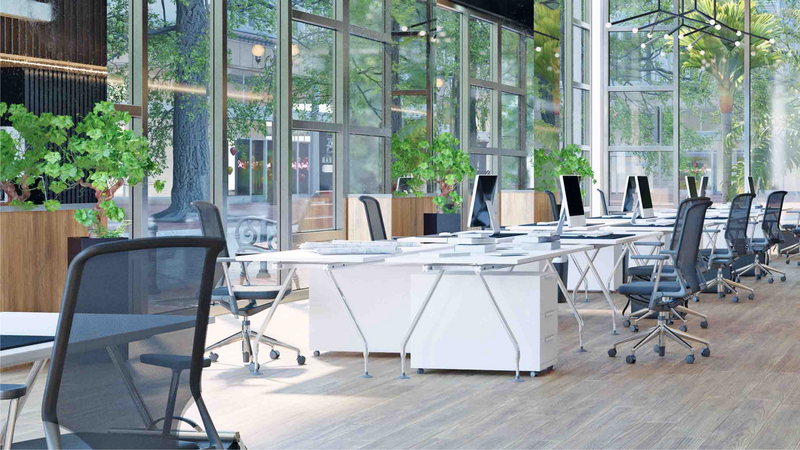Clearly, the application of healthy building design has become a necessary element in sustainable development. Commercial buildings are turning to daylighting, operable shading, nature views, green spacing, and enhanced filtering to produce better indoor air quality, increased intake of fresh air and natural light, and improved ventilation to make the workplace a safe, healthy, and enticing place to be.
As we return to the office, employers are concentrating on how to attract their people back, and workplace design that stimulates, motivates, and enables innovation is a must — not just for business success, but also the well-being of staff. In a Human Space global study, one-third of 7,600 office employees surveyed stated that the design of an office would affect their decision to work at a company. Another study conducted by the Harvard Business Review found that views of outdoor spaces and natural light were more important to employees than features like on-site cafeterias, fitness centers, and even childcare. But the benefits of biophilic design are not limited to employees: views of vegetation and access to natural light and outdoor spaces can improve worker productivity by as much as 12% — resulting in accelerated delivery times and greater output volumes. Offices with biophilic design see nearly 20% less sick days taken than those where biophilic design is not used. Overall, employees in an environment that deploys biophilic design report a 15% higher level of well-being.
Biophilic design also impacts the perceived value of an office space, as well as the savings it can generate. Research found that higher usage of vegetation to improve overall aesthetics added approximately 7% to the perceived value of a space. This correlates to greater success in recruitment in an ever-increasing war for talent, because for many candidates, a clean, healthy environment that includes elements of nature translates to a company that cares about the environment and its employees. The use of natural lighting can also have a huge impact on energy costs since it can replace some or all of manufactured lighting in a space. This can create an overall reduction in energy costs by 50% to 80%. In addition, biophilic design can improve indoor air quality by reducing toxic and volatile organic compounds through plants that remove these elements as part of their natural function.

